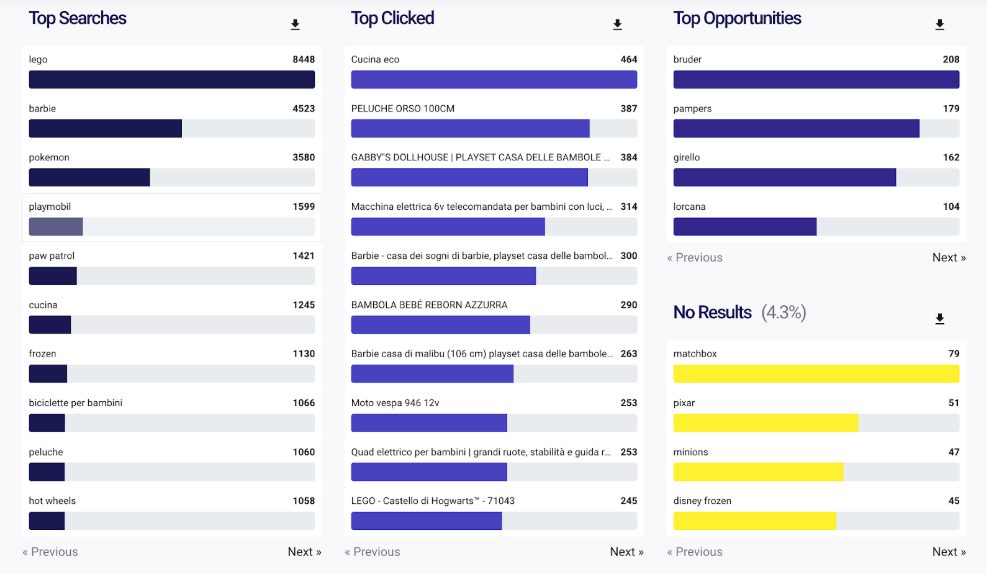On the surface, running an online store looks simple. You set it up, list your products, orders come in, and you ship. But there’s so much more happening under the hood to ensure its smooth operation. Marketing, website management, payment processing… the list goes on.
And eCommerce management is the glue that holds it all together.
In this article, you will learn the eCommerce management definition, benefits, scope, best practices, and the latest trends.

What is eCommerce Management?
eCommerce management means overseeing and coordinating all aspects of online store operations: the strategy, tools, and processes that help achieve its business goals.
This includes running marketing campaigns, designing and managing the website, keeping stock levels in sync with demand, resolving issues, and ensuring that orders ship promptly and to the right address.
So, it’s a bit like juggling flaming torches while riding a unicycle or playing multiple chess games at once.
Why is eCommerce Management Important?
Whether it’s increasing sales, expanding market reach, or improving profit margins, eCommerce management helps achieve business objectives.
It achieves it by:
- Improving operational efficiency through optimized processes.
- Optimizing resource allocation to reduce waste and deliver the best ROI.
- Improving customer experience and satisfaction so customers keep coming back and recommending your business.
- Preventing common challenges that can hinder success, like supply issues.
- Fostering adaptability to market changes and demand fluctuations.
The Core Pillars of eCommerce Management
Here’s an overview of the key aspects of effective eCommerce management.
Strategic Planning and Business Development
Strategic planning and business development drive long-term growth.
Key tasks include:
- Defining objectives, target market segments, and timelines.
- Tracking rivals’ pricing and tactics, like promotions or launches.
- Monitoring trends, such as changes in consumer behaviors or the emergence of new technologies.
Linking every decision to this strategy helps the business stay on course and use resources where they matter most.
Marketing and Sales Strategy
Marketing and sales strategy are vital for ensuring store visibility, attracting the right customers, and converting visits into purchases.
This involves:
- Search engine optimization & website content creation (guides, blog posts, and optimized product pages to pull in qualified search engine traffic).
- Social media campaigns.
- Paid search & display (PPC ads and retargeting campaigns nurturing high-intent audiences)
- Influencer & affiliate programs to gain trust and extend your reach.
- Email marketing to keep users engaged, strengthen customer relationships, drive upsells and cross-sells.
- Analytics & reporting (tracking store, SEO, and campaign performance to fine-tune tactics)
Website and Platform Management
Website and platform management is vital to make your store reliable, fast, and easy to navigate.
In practice, this involves:
- Mobile optimization
- Performance tuning (to trim load times)
- UX design & navigation optimization (to make product discovery and checkout intuitive).
- Routine maintenance (platform updates, security patches, etc).
- Technical monitoring and troubleshooting (downtime, checkout errors, site speed, etc).
Inventory and warehouse management
Inventory and warehouse management focus on tracking inventory levels and organizing warehouse operations so that goods are always available for timely delivery.
Main tasks include
- Stock monitoring
- Demand forecasting based on sales trends and seasonal patterns.
- Supplier coordination to align purchase orders, lead times, and deliveries.
- Warehouse layout design with optimized picking paths and storage zones.
- Cycle counts & audits to ensure accurate records.
Doofinder keeps your search results synced with real-time inventory—so customers see what’s in stock. Plus, search data reveals demand trends and highlights missing products, helping you forecast and restock smarter.
Customer Service and Experience
eCommerce managers are responsible for building support channels to ensure satisfaction, ensuring fostering customer retention, and loyalty.
Main tasks include:
- Multichannel support (live chat, email, phone, etc).
- Feedback collection (running surveys and analyzing reviews).
- Personalization (tailoring product suggestions using browsing and purchase history).
- Customer journey optimization (like removing unnecessary steps).
- Post-purchase communications (sending shipping alerts and satisfaction surveys).
- Search optimization (so customers can easily find relevant products).
With Doofinder, you can personalize product recommendations and search results based on past customer behavior.
Payment Processing
An eCommerce manager ensures customers can complete orders without friction.
This involves:
- Integrating secure payment gateways.
- Enabling various payment methods such as cards, digital wallets, and buy-now-pay-later schemes.
- Detecting and preventing checkout fraud.
- Monitoring transactions to spot failures or declines.
- Handling refunds and chargebacks.
- Supporting customers with payment issues, like disputed charges
Order and Fulfillment Management
Order and fulfillment management focuses on delivering products on time and at minimal cost.
Main tasks include:
- Order validation and processing
- Picking and packing optimization to cut handling time and reduce errors.
- Carrier selection and coordination for cost-effective, trackable shipping.
- Return, exchange, and replacement handling.
- Delivery performance monitoring.
Stakeholder management
Stakeholder management focuses on aligning internal teams and external partners.
Main tasks include:
- Team recruitment & development
- Improving internal collaboration by hosting regular check-ins and cross-functional meetings.
- Negotiating contracts, setting service-level agreements, and reviewing supplier performance.
- Promoting effective communication through shared dashboards and centralized documentation.
- Managing and resolving internal and external conflicts.
Biggest eCommerce Management Challenges
eCommerce managers face a range of challenges. Here are the four of them.
Inventory Management Complexities
60% of Shopify merchants who took part in a 2024 Katana study reported that aligning inventory with customer demand was a significant difficulty.
That’s just one inventory management challenge eCommerce businesses face. The others include:
- Managing inventory across multiple sales channels and sites.
- Insufficient real-time inventory visibility: according to Meteorspace, 63% of businesses struggle with it, and only 9% achieve full visibility.
- Lack of storage space
- Outdated and siloed systems cause issues with inventory, manufacturing, and accounting data synchronization for 83% of merchants.
The result?
Customer dissatisfaction, for example, from late deliveries, lost sales (they look elsewhere when the product is out of stock), higher operational costs (storing inventory is the highest expense for most small businesses, and overstocking ties up cash and forces discounts).
All in all, it’s estimated that inventory distortion costs businesses around $1.6 trillion every year.
Supply Chain and Fulfillment Issues
Supply chain issues are another leading cause of inventory distortion. 73% of eCommerce businesses were affected by international shipping disruptions like delays, damaged products, or theft in 2023/2024.
The main causes included:
- Global tensions (like the Suez Canal accident or the recent conflict in the Red Sea area).
- Infrastructure limitations (like congested ports).
- Increased customer demand (the COVID-19 pandemic accelerated the growth of eCommerce).
- Growing customer expectations (free or overnight delivery).
Again, this has a financial impact… It’s estimated that supply chain delays cost businesses up to 15% of their annual revenue.
Marketing, Customer Acquisition, and Trust
Late or cancelled deliveries undermine customer trust, which is increasingly difficult to gain.
As the industry grows, so does the competition. This, combined with higher advertising costs, makes it more expensive to acquire new customers. In fact, the customer acquisition cost (CAC) has more than doubled since 2009.
This is particularly challenging for new businesses trying to carve out a slice of the market for themselves and competing against retail giants like Amazon.
Data Security and Cybersecurity
eCommerce is among the top industries targeted by cyberattacks. In 2024, it was affected by nearly 7% of all ransomware attacks and data leaks worldwide, and 80% of retailers experienced cyberattacks.
The reason? eCommerce platforms handle sensitive customer data, including payment details and personal information, which makes them an attractive target for cybercriminals.
Cyberattacks lead to financial losses resulting from disruptions, legal consequences, erosion of customer trust, and increases in overheads.
eCommerce Management Best Practices
With the theory covered, let’s get practical. Here are the six best practices for eCommerce managers.
Built an Excellent eCommerce Website
A clean layout, clear navigation, and reliable search let shoppers find what they need — and check out without frustration.
Prioritize:
- User-centric design: place clear menus, intuitive filters, and a visible search bar above the fold.
- Speed tuning: compress images, defer noncritical scripts, and host assets on a CDN to cut load times under two seconds.
- Regular audits: review content for accuracy, test forms and links, and refresh visuals or UI patterns at least quarterly.
Focus on Data-Driven Performance Monitoring and Optimization
Choose a handful of metrics that tie directly to your business objectives and use them to pinpoint opportunities and optimize performance.
Common eCommerce metrics include:
- Conversion rate (CVR)
- Average order value (AOV)
- Customer acquisition cost (CAC)
- Customer lifetime value (CLV)
- Cart abandonment rate
- Click-through rate (CTR)
- Website traffic
- Bounce rate
Track these in a single dashboard each week. When you spot a dip — or a spike — dig in. Is it seasonal or a major shift? Use what you learn to sharpen campaigns, tweak pricing, or reallocate budget.
Test, Test, Test
Run A/B and multivariate tests to choose the best performing options for critical elements, like:
- Ad copy
- Headlines
- Page layouts
- Checkout flows
- Email subject lines
- Product descriptions

After each round, roll out the top performer, then run another test. Rinse and repeat. Until you build a finely-tuned experience that drives customer satisfaction and revenue. Then do more testing.

Plan for Internationalization and Localization
If you’re Sselling abroad, localize your store. If you aren’t selling abroad yet, set it up so it’s easy to localize in the future.
Mind you, localization is more than translation. It involves:
- Creating locale-specific content, like images that match local cultural norms.
- Adjusting pricing to local reality and offering payment options that the target buyers prefer.
- Choosing shipping carriers with proven coverage and tracking in the target market.
- Organizing sales and promotions around local holidays.
Take your time. Roll it out carefully, country by country. Test and iron out kinks before expanding into another market.
Manage Risks Proactively
To minimize disruption, understand all the risks involved and work out the best ways to address them before they become issues.
Follow this 3-step process:
- Map out all the processes and associated risks
- Assess their likelihood and severity on a 3-step scale, for example, low, mid, and high. For example, a warehouse fire is very unlikely but very severe in its consequences. Supply delays are very likely and have a medium impact.
- Identify the best mitigation strategies. For example, take out insurance to protect yourself in case of fire and diversify suppliers so you don’t depend on just one.
Understanding potential threats and how to tackle them best gives you peace of mind and enables better resource use.
Build a Reliable Tech Stack
A solid eCommerce management software will help you minimize threats and better exploit arising opportunities.
Your tech stack should include:
- eCommerce platform (Shopify, BigCommerce, WooCommerce)
- CRM & digital marketing platform (Klaviyo, HubSpot, Salesforce)
- SEO suite (Ahrefs, SEMrush, Moz Pro)
- Web and UX analytics (Google Analytics, Adobe Analytics, Hotjar.
- Customer service solution (Gorgias, Zendesk, Intercom)
- Order and inventory management system (Linnworks, Zoho Inventory, NetSuite ERP)
- Shipping & fulfillment software (ShipStation, Shippo, Easyship)
- Payment processing solution (Stripe, PayPal, Square)
- Fraud prevention solution (Signifyd, Kount, ClearSale)
- Review management platform (Yotpo, ReviewTrackers, Birdeye)
- Shopping experience personalization & search behavior analysis tool (Doofinder, Algolia, Bloomreach).

When choosing tools, prioritize systems that can grow with your business to avoid high switching costs in the future.
And you want your tool stack to seamlessly sync data to give you a unified view of your operations and customer interactions, and to avoid silos.
eCommerce Management Trends
Let’s finish with an overview of the main trends shaping modern eCommerce management in 2025.
AI & Machine Learning
More than three-quarters of online retailers have already implemented AI or are planning to do so.
AI-powered solutions support every step of the customer journey:
- They analyze and learn shoppers’ habits, adjust product recommendations on the fly, and reduce search time.
- Chatbots, which Gartner predicts will become the main CS channel by 2027, improve response times, free teams to deal with complex issues, and reduce overheads.
- AI spots low-stock warnings, forecasts demand shifts, and flags supplier risks before they disrupt operations.
The market for these solutions was worth $6.90 billion in 2024 and is forecast to hit $31.43 billion by 2034, which shows how essential they’re becoming for eCommerce management.
Doofinder uses AI to hyperpersonalize your customers’ search results and product recommendations based on their browsing history.
Personalized Omnichannel Commerce
Today’s buyers hop between online and physical stores, and engage with a brand across multiple channels.
For instance, they may learn about the product on social media or run a visual search on their mobile, visit the product page on their laptop, buy on their mobile again, and pick it up from a physical store.
According to McKinsey, customers expect the omnichannel shopping experience to be not only seamless but also highly personalized:
“80 percent of US adults want personalization from retailers with multiple, personalized touchpoints, which can include a mobile app, digital displays, interactive screens, tech-enabled associates, and point of sale.”
Retailers who manage to deliver personalized omnichannel experiences see their sales increase by 5-15%.
Social Commerce & Voice Technology
Social selling has become a channel in its own right: Social media platforms are expected to account for over 17% of global eCommerce sales in 2025.
At the same time, voice commerce is on track to reach $34 billion by 2034. Half of U.S. consumers use voice search every day, and over 51% rely on assistants for product research and personalized suggestions.
To keep pace, you’ll need catalogs optimized for voice queries and real-time personalization across channels: the web, apps, and smart speakers.
Sustainable Commerce & Ethical Practices
As many as 70% of shoppers in the US and Europe now pick sustainable brands, forcing eCommerce businesses to invest in sustainability.
Think recyclable & recycled packaging, renewable energy, low carbon footprint suppliers, and delivery companies.
Brands with robust sustainability programs see higher customer loyalty and enhanced reputation.
Advanced Supply Chain & Fulfillment Technologies
As mentioned, supply chain, inventory, and shipping issues plague retail brands across the board. So, it isn’t surprising that nearly 70% of eCommerce tech investment goes to supply chain monitoring, tracking, and visibility solutions.
And it pays off: According to BlueYonder, 61% of US companies that have invested in supply chain technology have seen efficiency improvements, 39% extended market share, and 38% higher revenue growth.
Integrating warehouse technologies, like IoT sensors, robotics, and AI control systems, improves fulfillment efficiency and reduces disruptions. As a result, the average parcel delivery time in the US decreased from 6.6 days in 2020 to just over 2 days in 2025.
Emerging Technologies & Platform Innovations
A new wave of tools lets merchants pick the best-in-class components. But also forces them to innovate to stay competitive.
Apart from the widespread use of AI, some examples include:
- Blockchain enables payment and supply-chain records, and you can expect more commerce stores to implement blockchain technologies in their processes.
- AR/VR trials let shoppers “try on” products in 3D or explore virtual showrooms, which can cut return rates and lift engagement.
- Composable commerce breaks the tech stack into modular services — search, payment, fulfillment — so you swap or upgrade parts without rebuilding the system from scratch.
Conclusion
Running an eCommerce store involves overseeing multiple processes. While small online business owners are likely to manage all the aspects themselves, large companies hire dedicated managers for the job.
Regardless of your business size, specialist eCommerce management tools will help you automate and streamline all aspects of your eCommerce operations.
For example, Doofinder can help you analyze user behavior on your website to inform your inventory and marketing decisions, improve user experience with accurate search results, and drive sales with personalized product recommendations. Sign up and start now!









